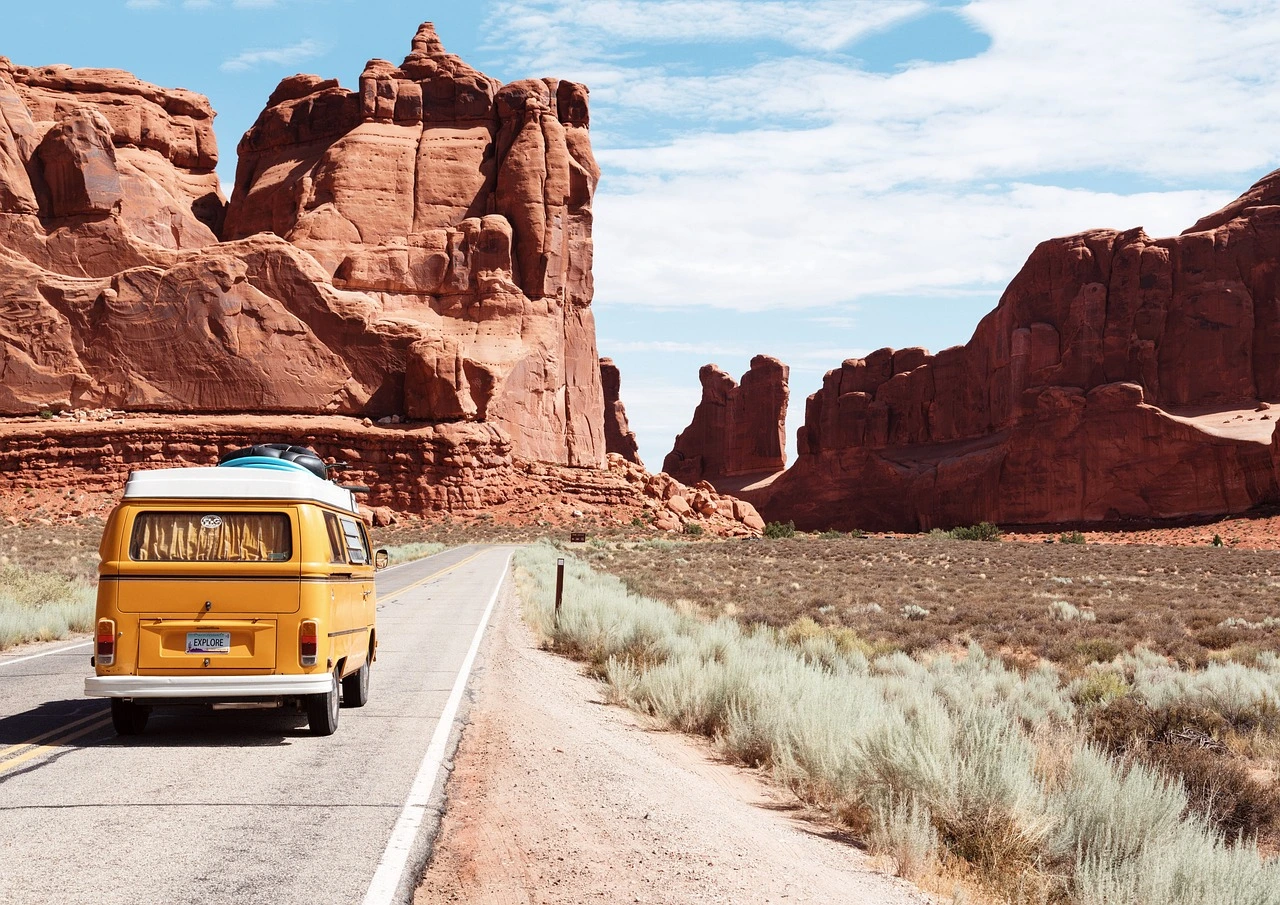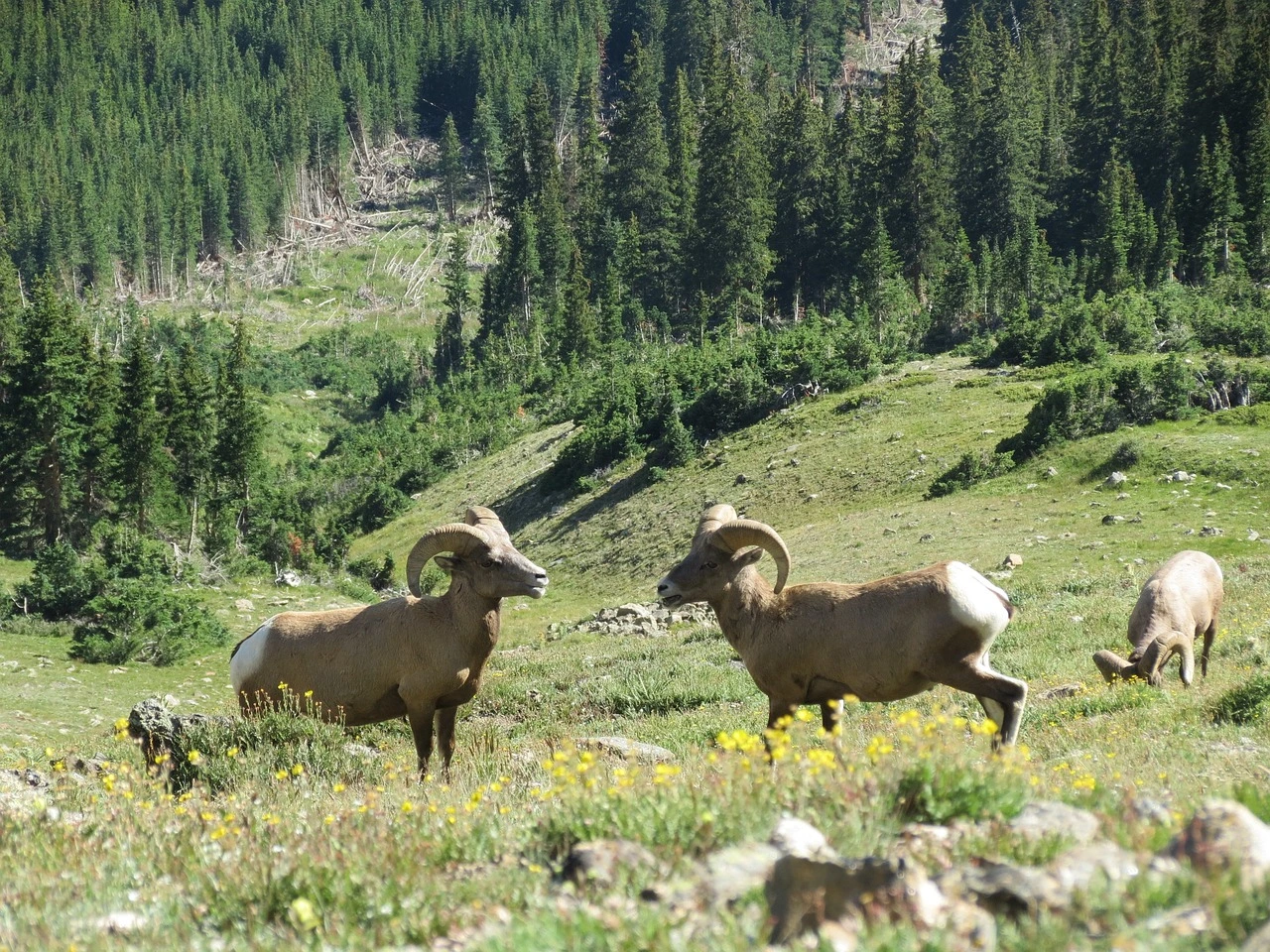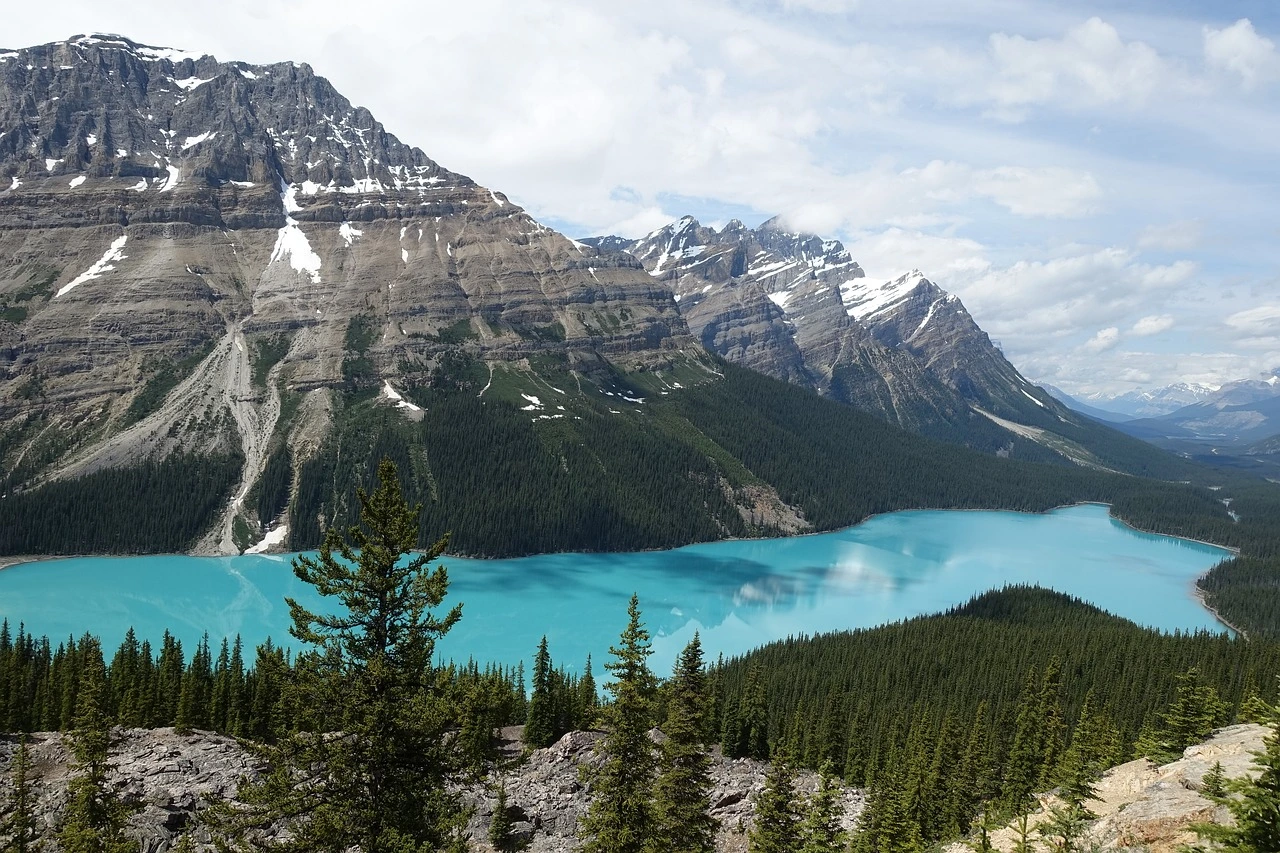Rocky Mountain National Park Facts: Unveiling Historical Significance and Natural Marvels
Rocky Mountain National Park in Colorado is a beautiful place with mountains and meadows. It is a popular park with interesting facts about its area, story, people, and mountain lions. The park has lots of wildlife, including mountain lions. It also has high elevations. You can learn more about it in Estes Park.

Historical and Cultural Significance
Establishment and UNESCO Recognition
Rocky Mountain National Park is one of the oldest national parks in the United States. It’s been around since 1915! In 1976, the Verne National Park area became a UNESCO Biosphere Reserve because it’s really important for nature and culture. This means that Rocky Mountain National Park is special because it’s beautiful and has a lot of history in Estes Park.
Native American Tribes
Native American tribes have lived in this area for a really long time, like more than 10,000 years. They’ve been here for a super long time and they’re still here today. Their history adds something special to Rocky Mountain National Park.
People have been living in the national park for a really long time. This helps us learn about how ancient civilizations lived and settled in North America, including national parks and Estes Park.
Geographic Marvels and Natural Attractions
Vast Park Area
Rocky Mountain National Park Rocky Mountain National Park is really big, covering 415 square miles. It has lots of different landscapes like mountains and lakes. You can explore and discover a lot there.
Rocky Mountain National Park is really big and has lots of cool stuff to see. You can see all kinds of amazing things that show how awesome nature is. It’s like a big adventure where you get to see the amazing power and beauty of the earth.

Majestic Peaks and Hiking Trails
In Rocky Mountain National Park, there’s a really tall mountain called Longs Peak. It’s the highest one in the whole park, standing at 14,259 feet. It’s super impressive and shows how amazing the park is.
Visitors can explore over 300 miles of hiking trails. They can see beautiful landscapes and mountains. They can also learn cool facts about this awesome place.
Trail Ridge Road and Its Scenic Beauty
Panoramic Views
Trail Ridge Road, the highest continuous paved road in North America, is a must-see attraction at Rocky Mountain National Park. At an elevation of 12,183 feet, this iconic road offers panoramic views of the surrounding mountains, meadows, and forests. As you drive along this remarkable route, you’ll be treated to breathtaking vistas that showcase the park’s natural beauty.
Traveling on Trail Ridge Road in Rocky Mountain National Park is a really special experience. It lets you see how the ecosystems change as you go higher up. You can see lots of different landscapes in a short distance, from forests to alpine tundra. It’s a great way for families and nature lovers to explore and appreciate the different environments in the park.
Wildlife Sightings
Trail Ridge Road is not just beautiful, it also gives you a good chance to see different animals. You might see cutthroat trout, elk herds eating in fields, or even bighorn sheep climbing cliffs near the road. Seeing all these different animals against the backdrop of big mountains makes your journey on Trail Ridge Road even more exciting.
Wildlife and Biodiversity Highlights
Diverse Wildlife
Rocky Mountain National Park is a haven for wildlife enthusiasts. The park shelters an array of animals, such as elk, mule deer, bighorn sheep, black bears, and even majestic moose. Visitors can catch glimpses of these creatures in their natural habitat, making it a thrilling experience.
The park’s diverse ecosystem also provides a home to various fish species, mountain lions, and other fascinating animals that contribute to the rich biodiversity present within its boundaries.

Birdwatcher’s Paradise
Rocky Mountain National Park is a great place for people who love birds. There are more than 280 different types of birds in the park, so you can see lots of different kinds. Some birds have pretty colors and some are big and strong. When you visit the park, you might see a Western Tanager or a Golden Eagle. It’s really nice to listen to all the birds singing and it makes the park even more special.
Flourishing Plant Life
Rocky Mountain National Park has lots of different kinds of plants. The meadows have pretty wildflowers in all different colors. There are also really old trees called bristlecone pines that grow on the high slopes. When you walk on the trails, you can see all kinds of cool plants that you might not have seen before. The park is a great place to explore and see all the beautiful nature.
Alpine Environment and Ecological Importance
Fragile Ecosystem
The tundra in Rocky Mountain National Park is a fragile place. It’s really tough for plants to survive there because of the cold and windy weather. But some plants have found ways to adapt, like growing close to the ground or having furry coverings. This special place has lots of different kinds of plants that have learned how to live in the freezing cold and windy conditions of the high mountains.
Water Storage and Conservation
The mountains in Rocky Mountain National Park are really important for holding water. When it snows in the winter, the snow stays on the peaks and then melts slowly when it gets warmer. This water goes downstream and gives us a good supply of clean water. It also helps stop droughts in lower areas. The mountains act like a big water tank and help lots of communities have drinking water. They also help keep the water ecosystems healthy.
Habitat for Endangered Species
Rocky Mountain National Park is home to some animals that are in danger of disappearing, like the Canada lynx and greenback cutthroat trout. The park’s efforts to protect these endangered species are really important. By keeping their natural homes safe inside the park, these animals have a better chance of staying alive.

Conservation and Environmental Preservation
Sustainable Practices
Rocky Mountain National Park wants to protect its natural resources by using sustainable practices. They take care of what visitors do and try to reduce waste. They also want people to be more eco-friendly. For example, they tell visitors to use certain paths so they don’t hurt the plants.
People try to not hurt the plants and animals in Rocky Mountain National Park. They want to teach visitors about taking care of nature and being responsible so that everyone can enjoy the park for a long time.
Collaborative Initiatives
Rocky Mountain National Park works with local communities and groups to help take care of the environment. They team up with towns like Estes Park to create educational programs for schools and community organizations. The goal is to teach people about protecting wildlife and living in a way that doesn’t harm the planet. Rocky Mountain National Park doesn’t just focus on its own area – it also helps with conservation efforts in nearby places. They share information with other parks and reserves in Colorado to learn about ways to protect different plants and animals.
Seasonal Changes and Year-Round Activities

Unique Charm
The Rocky Mountain National Park changes a lot throughout the year. Each season has its own special beauty. In the spring, there are lots of pretty flowers that make the park look really colorful. In the summer, everything is really green and there are lots of animals to see.
Winter Wonderland
During winter, Rocky Mountain National Park becomes a beautiful place covered in snow. The snowy mountains and valleys create a magical sight that calls out to people who love the outdoors. At this time, you can do snow sports like skiing and snowboarding. Many adventurers come to have fun on the slopes.
Ranger-Led Programs
In every season, people can join park rangers for fun activities and events that teach them about the amazing things in rocky mountain national park. These programs help us understand how to take care of nature and learn more about the different parts of the park.
Unique Natural Attractions in Rocky Mountain National Park

Diverse Wildlife
Rocky Mountain National Park is home to many different kinds of animals like elk, moose, bighorn sheep, and black bears. You can see these animals in their natural homes all over the park. For example, you might see elk eating grass in the meadows or a cool bald eagle flying high up in the sky. The park has lots of different places for these animals to live and grow. There are also smaller animals like marmots, pikas, and different kinds of birds. These animals are important for the park’s nature and make it even more beautiful.
Spectacular Waterfalls
Rocky Mountain National Park has some really amazing waterfalls. There are lots of them in the park, like Alberta Falls and Chasm Falls. They’re so beautiful and make you feel amazed by nature. The water falls down from high cliffs into clear pools below. It’s like a picture that you won’t forget.
You can go on beautiful hikes along nice trails that take you directly to these amazing waterfalls. As you walk through pretty forests and over small streams, you get to see really stunning views of these strong yet calm natural wonders.
Recreational Activities in Rocky Mountain National Park
Hiking
Hiking is a really popular thing to do in Rocky Mountain National Park. There are more than 350 miles of trails to choose from, so there’s something for everyone. You can see animals, enjoy beautiful views, and experience different kinds of nature while you hike in the park.
Hiking is a great way to explore the amazing landscapes of Rocky Mountain National Park and get close to nature. There are many different options for hikers, including easy walks around beautiful lakes or exciting climbs up the park’s peaks. It doesn’t matter how old you are or how experienced you are, there’s something for everyone to enjoy.
Wildlife Viewing
You can have a lot of fun watching animals in Rocky Mountain National Park. There are different kinds of animals there, like elk, moose, bighorn sheep, and mule deer. You can see them in their homes all year round. Watching animals is a good way to learn about them. You can also take cool pictures with these famous North American animals.
Visitor Information for Rocky Mountain National Park
Location and Access
Rocky Mountain National Park is in Colorado, a state in the western part of the United States. You can easily get there by car from big cities like Denver and Boulder. You can go in through different entrances, like the one near Estes Park or the one on the west side by Grand Lake. Lots of people visit the park every year because it has lots of different ecosystems and really pretty views. You can do all sorts of fun stuff there, like hiking, looking at animals, camping, and driving along Trail Ridge Road.
Seasons and Weather
When you go to Rocky Mountain National Park, you need to be ready for different kinds of weather all year round. In the summer, it’s not too hot and there might be thunderstorms in the afternoon sometimes. But in the winter, it snows a lot and it gets really cold up high. Lots of people come in the fall to see the pretty leaves on the aspen trees turn golden. And in the spring, there are lots of wildflowers blooming in the meadows. When you plan your trip, remember that some parts of the park might be closed because of snow or road problems.

Top 10 Rocky Mountain National Park facts
- Sky-High Elevation: Rocky Mountain National Park boasts over 100 peaks exceeding 11,000 feet, creating a stunning alpine landscape.
- Trail Ridge Road Thrills: The highest continuous paved road in the U.S., Trail Ridge Road, takes you through breathtaking vistas above the tree line.
- Wildlife Extravaganza: Encounter diverse fauna, including elusive mountain lions, black bears, and the iconic elk roaming freely.
- Snowy Wonders: With an average of 275 inches of snowfall annually, the park transforms into a winter wonderland for snowshoeing and skiing.
- Floral Symphony: Over 1,000 plant species, including vibrant wildflowers like the Colorado Columbine, paint the meadows in a riot of colors.
- Starry Nights: Designated as an International Dark Sky Park, the park offers mesmerizing stargazing opportunities due to minimal light pollution.
- Geological Marvels: Witness the Alluvial Fan waterfall, a result of glacial activity, showcasing nature’s sculpting prowess.
- Backcountry Bliss: With over 350 miles of hiking trails, the park caters to both novice and seasoned hikers seeking unforgettable adventures.
- Historic Cabins: Discover remnants of early homesteads and cabins, providing a glimpse into the park’s pioneer history.
- Outdoor Classroom: Rocky Mountain National Park‘s educational programs unravel the mysteries of its ecosystems, making it a fascinating learning destination.
Final Remarks
Rocky Mountain National Park is an amazing place full of wonders. It has a long history and is home to many different animals and beautiful landscapes. No matter who you are, whether you love nature, history, or just want an adventure, this park has something for you. So why not plan a trip here and see it all for yourself? Now that you know what’s waiting for you at Rocky Mountain National Park, it’s time to get ready for an unforgettable journey. Pack your bags and get ready to explore the beauty of nature, hike on scenic trails, and make memories that will last forever. Don’t miss out on the chance to see the greatness of this famous national park – start planning your visit today!
Frequently Asked Questions
Q: What are some historical and cultural highlights of Rocky Mountain National Park, grand canyon, front range, mountains, wilderness areas?
A: Rocky Mountain National Park has a rich history dating back to ancient Native American tribes. The park preserves archaeological sites, historic structures, and cultural landscapes that offer insights into the area’s past.
Q: What unique natural attractions can be found in Rocky Mountain National Park, grand canyon, mountains, wilderness areas, parks?
A: The park boasts unique natural wonders such as the iconic Trail Ridge Road, which offers breathtaking views of alpine tundra and wildlife. Visitors can also explore stunning waterfalls, pristine lakes, and diverse ecosystems within the park.
Q: How does Rocky Mountain National Park, a wilderness area in the mountains, contribute to conservation and environmental preservation in the natural world?
A: Rocky Mountain National Park plays a crucial role in preserving biodiversity, protecting fragile ecosystems, and mitigating climate change impacts. Through various conservation efforts and sustainable practices, the park ensures the long-term health of its natural environment.
Q: What recreational activities are available in Rocky Mountain National Park, parks, mountains, wilderness, springs?
A: Visitors can engage in a wide range of recreational activities including hiking through scenic trails, wildlife viewing, birdwatching, camping under starry skies, fishing in crystal-clear streams or simply immersing oneself in nature’s tranquility.
Q: Where can I find visitor information for planning a trip to Rocky Mountain National Park and surrounding area?
A: For comprehensive visitor information including entrance fees, operating hours for facilities like campgrounds or visitor centers as well as trail conditions – visit the official website of Rocky Mountain National Park or contact their visitor center directly.


1 thought on “Top Hidden Rocky Mountain National Park Facts and Best Guide”